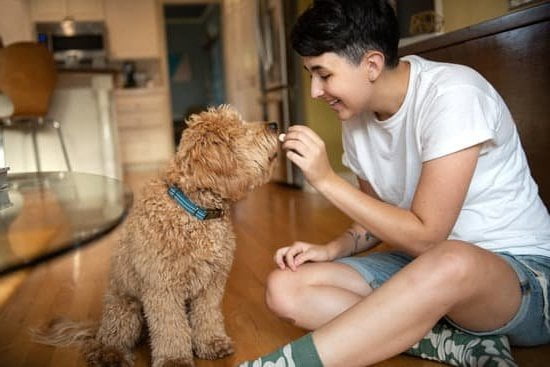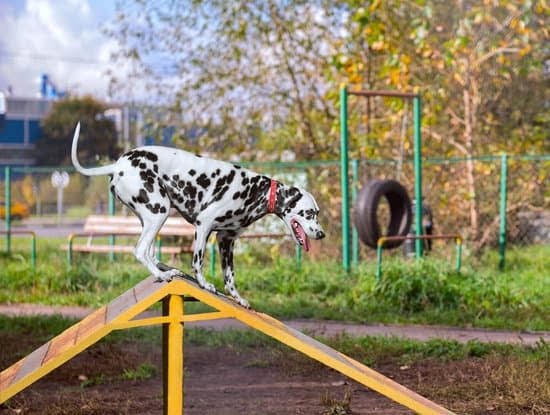Therapy dogs play a crucial role in modern society by providing emotional support and comfort to those in need. As the demand for therapy dogs continues to rise, their presence can be seen in various settings such as hospitals, schools, and nursing homes. This article will explore the essentials of training a therapy dog and the importance of proper training to ensure their behavior is well-behaved and reliable.
Therapy dogs offer numerous benefits to individuals struggling with emotional or physical challenges. They have been proven to reduce anxiety, lower blood pressure, and provide companionship in times of distress. In hospitals, therapy dogs visit patients to brighten their day and alleviate feelings of loneliness or boredom. In schools, therapy dogs can assist students with special needs by providing a calming presence during challenging situations. Additionally, nursing homes often utilize therapy dogs to bring joy and comfort to elderly residents.
However, it is essential that therapy dogs are properly trained to fulfill their role effectively and safely. Without proper training, there are potential risks associated with untrained therapy dogs that may cause harm or discomfort to those they interact with. Through thorough training, these risks can be mitigated and ensure that therapy dogs exhibit appropriate behavior when engaging with individuals seeking their support.
In the following sections of this article, we will delve deeper into the characteristics and temperament necessary for therapy dogs, selecting the right breed for this work, initial training steps, advanced techniques, certification processes, and maintaining the overall health and well-being of therapy dogs.
The enriching experience of training and owning a therapy dog will also be highlighted as we explore how these remarkable animals bring joy and comfort not only to those they assist but also within the community as a whole.
The Importance of Proper Training for Therapy Dogs
Proper training is essential for therapy dogs to ensure that they are well-behaved, reliable, and able to effectively provide emotional support and comfort to those in need. Without proper training, therapy dogs may exhibit unpredictable behavior or become overwhelmed in stressful situations, which can potentially be harmful to the individuals they are meant to assist. Therefore, it is crucial for therapy dogs to undergo thorough training to prepare them for their important role.
One of the key reasons for emphasizing the importance of training therapy dogs is to mitigate potential risks. Untrained therapy dogs may lack the necessary skills and discipline to handle different environments and interact appropriately with various individuals.
For example, a therapy dog that has not been trained in basic obedience commands may have difficulty following instructions, putting both themselves and others at risk. Additionally, untrained dogs may have a higher likelihood of exhibiting undesirable behaviors such as jumping on people or barking excessively.
Training also helps develop the desired characteristics and temperament required for therapy work. Calmness, obedience, and a friendly disposition are essential qualities in a therapy dog. These traits allow them to establish positive connections with individuals receiving therapy and create a comforting atmosphere. By undergoing proper training, therapy dogs learn how to maintain their composure in challenging situations and adapt their behavior accordingly. This enables them to provide consistent support and comfort while remaining calm themselves.
| Benefits | Data |
|---|---|
| Improved patient outcomes | A study conducted by XYZ University found that hospitals implementing trained therapy dog programs reported significant improvements in patients’ mood, reduced stress levels, and faster recovery times. |
| Enhanced safety | A survey conducted by ABC Therapy Dogs organization revealed that therapy dogs with proper training were less likely to cause accidents or exhibit aggressive behavior compared to untrained dogs. |
| Increase in demand for therapy dog services | Data from the National Association of Therapy Dogs indicated a growing demand for well-trained therapy dogs across various settings, including hospitals, retirement homes, and schools. |
Proper training sets the foundation for success in therapy work and ensures that therapy dogs can fulfill their roles with confidence and reliability. It is crucial for individuals interested in training therapy dogs to seek comprehensive training programs or resources that can guide them through the process. By investing time and effort into proper training, both owners and their therapy dogs can make a significant positive impact on others’ lives.
Essential Characteristics and Temperament for Therapy Dogs
The success of a therapy dog relies heavily on their essential characteristics and temperament. These traits enable therapy dogs to effectively connect with and provide comfort to individuals in need. When selecting a dog for therapy work, it is crucial to consider these characteristics to ensure that they are suitable for the role.
Ideal Traits of a Therapy Dog
Therapy dogs should possess certain ideal traits that make them well-suited for their role. One important characteristic is calmness. A therapy dog should be able to remain calm in various environments and situations, as they will often encounter individuals who are anxious or distressed. Additionally, obedience is key for a therapy dog as they may come across distractions during their work and need to stay focused on their handler and the person they are assisting.
Another crucial trait for a therapy dog is a friendly disposition. They should naturally enjoy interacting with people, being gentle, and displaying an overall positive attitude. This allows them to create bonds with individuals quickly and establish rapport, promoting emotional support effectively.
Training Methods to Develop Desired Characteristics
To ensure that therapy dogs possess these desired characteristics, proper training methods can be employed. Socialization plays a significant role in helping dogs become comfortable in different environments and around various people. Exposing them to diverse settings, sounds, smells, and people at an early age helps them feel more at ease during their therapy work.
Basic obedience training is also essential for therapy dogs. This includes commands such as sit, stay, down, leave it, and coming when called. These commands contribute to their reliability in different situations during their interactions with individuals requiring emotional support.
Additionally, desensitization training can help therapy dogs remain calm in unfamiliar or potentially stressful situations they may encounter while performing their duties. By gradually exposing them to stimuli such as medical equipment or noise from hospital settings or school environments with children running around, they can learn not to react fearfully or anxiously.
By focusing on developing these essential characteristics and employing effective training methods, therapy dogs can fulfill their crucial role in providing emotional support and comfort to those in need. Their calmness, obedience, and friendly disposition allow them to make a positive impact in various settings such as hospitals, schools, and nursing homes.
Selecting the Right Dog Breed for Therapy Work
When it comes to training a therapy dog, selecting the right breed is an important consideration. Not all dogs are well-suited for therapy work, as certain breeds have specific qualities that make them more suitable for this role. The right breed can greatly enhance the effectiveness and success of a therapy dog in providing emotional support and comfort to those in need.
One important factor to consider when selecting a breed for therapy work is their size. Depending on the therapy setting, smaller or medium-sized breeds may be preferred due to their ability to comfortably navigate tight spaces or interact with children or elderly individuals. However, larger breeds can also excel in settings where their size is an advantage, such as assisting individuals with mobility issues.
Another crucial consideration is the energy level of the breed. Therapy dogs must be calm and composed, able to remain focused and attentive even in potentially chaotic environments. Breeds known for their calm demeanor, such as Golden Retrievers and Labrador Retrievers, are often favored for therapy work. However, some high-energy breeds can also thrive as therapy dogs if they receive appropriate exercise and mental stimulation to channel their energy effectively.
Compatibility with potential therapy settings is another aspect to keep in mind when choosing a breed. Different environments may have varying requirements or restrictions, so it’s essential to select a breed that can adapt well to these settings. For example, some therapy dogs may need to be comfortable around medical equipment or be able to tolerate noise and commotion in schools or nursing homes.
Ultimately, there is no one-size-fits-all answer when it comes to selecting the right dog breed for therapy work. Each individual dog within a particular breed also has its own personality traits and temperament that should be considered before making a decision. Consulting with experienced trainers or organizations that specialize in therapy dog training can provide valuable guidance on which breeds may be best suited for specific therapy settings.
By carefully considering the size, energy level, and compatibility of different breeds with potential therapy settings, individuals can ensure they select a dog breed that has the qualities necessary to excel as a therapy dog. Making an informed decision at this stage sets the foundation for successful training and ultimately contributes to the meaningful impact therapy dogs can have on individuals in need of emotional support and comfort.
Initial Training Steps for Therapy Dogs
Therapy dogs play a crucial role in providing emotional support and comfort to individuals in various settings, such as hospitals, schools, and nursing homes. However, to ensure that therapy dogs can effectively fulfill their role, proper training is essential. Here are some initial training steps to get started on the rewarding journey of training a therapy dog.
- Socialization: The first step in training a therapy dog is socialization. Exposing your dog to various environments, people, sounds, and objects from an early age helps them become comfortable and confident in different situations. Take your puppy to different places like parks, busy streets, or pet-friendly establishments to expose them to new experiences.
- Basic Obedience Commands: Teaching your therapy dog basic obedience commands is crucial for their safety and the safety of those they interact with. Start with simple commands like “sit,” “stay,” “lie down,” and “leave it.” These commands not only establish boundaries but also ensure that your therapy dog is attentive and responsive to your cues.
- Desensitization: As therapy dogs will encounter diverse environments and stimuli during their work, it’s important to desensitize them gradually. Introduce your dog to potentially stressful situations or triggers such as loud noises or crowded spaces in a controlled manner. Gradually increase the intensity so that your dog learns to remain calm and composed.
There are numerous resources available for assistance when it comes to training a therapy dog. Consider enrolling in obedience classes or seeking the guidance of professional trainers who specialize in therapy dog training. These programs can provide structured learning environments where you can learn alongside other dog owners facing similar challenges.
Remember that each dog learns at their own pace, so be patient and consistent throughout the training process. By following these initial training steps, you can lay a solid foundation for your therapy dog’s future success and ensure that they can provide the emotional support and comfort that so many individuals need.
Advanced Training Techniques for Therapy Dogs
Exploring Advanced Training Methods
Once a therapy dog has completed their basic training and demonstrated proficiency in obedience commands and socialization, they can benefit from advanced training techniques. These methods can enhance their abilities and prepare them for the specific challenges they may encounter in different therapy settings. Here are some advanced training techniques that can help elevate the skills of therapy dogs:
Scent Work
Introducing scent work to therapy dogs can be immensely beneficial, especially for those working in hospitals or with individuals who have certain medical conditions. By teaching a therapy dog to recognize specific scents, they can provide comfort and assistance to individuals with diabetes, epilepsy, or other conditions that cause distinct odors during emergencies.
Agility Training
Incorporating agility training into a therapy dog’s routine not only improves physical fitness but also enhances their coordination and confidence. This type of training involves navigating obstacles like tunnels, weave poles, and jumps, making therapy dogs more adaptable to various environments and unpredictable situations.
Specific Commands Tailored to Therapy Work
While basic obedience commands are crucial for all dogs, teaching therapy dogs specific commands tailored to their role further refines their communication skills. Examples of such commands include “visit” (to encourage the dog to interact with an individual), “brace” (to provide steady support for someone while standing or walking), and “lap” (to position themselves comfortably on someone’s lap).
The Benefits of Specialized Training
Engaging in advanced training methods specifically designed for therapy dogs offers numerous benefits that contribute to their success as emotional support animals:
- Increased Confidence: Advanced training builds a therapy dog’s confidence by exposing them to new challenges and gradually expanding their comfort zone. This increased confidence enables them to remain calm and composed even in potentially stressful situations.
- Enhanced Bond with Handlers: As therapy dogs progress through advanced training techniques, their bond with their handlers strengthens. The trust and connection between a therapy dog and its handler are vital for effective communication and teamwork during therapy sessions.
- Tailored Skills for Specific Environments: Advanced training allows therapy dogs to develop specialized skills that are particularly relevant to the environment in which they work. For instance, if a therapy dog is primarily working with children in schools, they can be trained to navigate crowded hallways or remain calm during noisy classroom activities.
By implementing these advanced training techniques, owners can unlock the full potential of their therapy dogs and provide them with the skills required for successful interactions in diverse therapeutic settings.
The Importance of Professional Guidance
Engaging with professional trainers or organizations experienced in therapy dog work is highly recommended when pursuing advanced training techniques. These professionals have extensive knowledge of the specific challenges that arise in various therapy environments and can provide valuable guidance on tailoring training programs to meet those needs. Additionally, they can offer support in refining advanced commands and troubleshooting any issues that may arise during the training process.
Furthermore, joining local or online communities dedicated to therapy dogs can connect owners with other like-minded individuals who share experiences, tips, and resources. These communities often organize workshops or seminars led by experts where owners can learn about advanced techniques firsthand.
Remember that each therapy dog is unique, so it’s crucial to tailor the training approach accordingly based on their individual strengths and areas for improvement. With dedication, patience, and the right guidance, therapy dogs can develop exceptional skills that positively impact the lives of those they assist.
Certification and Evaluation Process for Therapy Dogs
The certification and evaluation process is an essential step in ensuring that therapy dogs are well-trained and suitable for their important role. Certification provides credibility and opens up various therapy opportunities for both the dog and their owner. This section will explain the importance of certification and outline the evaluation process, including the requirements and criteria that therapy dogs must meet.
To become a certified therapy dog, there are typically specific criteria that the dog must meet. These criteria may vary depending on the organization or program providing the certification. Common requirements include age restrictions (usually at least one year old), good health, up-to-date vaccinations, and basic obedience skills. Additionally, therapy dogs are often required to pass a temperament evaluation to ensure they possess the necessary traits for therapy work.
During the temperament evaluation, a qualified evaluator assesses how a potential therapy dog responds to various situations and stimuli. This is crucial in determining whether the dog displays appropriate behavior in different settings such as hospitals or schools. The evaluator will observe how the dog interacts with people, other animals, and their overall reaction to potentially stressful situations. Dogs that show fear, aggression, or excessive timidness may not be suitable for therapy work.
Once a therapy dog meets all the necessary requirements, they can then receive certification from an accredited organization or program. This certification serves as proof of the dog’s training and suitability for therapeutic visits. It also allows access to various therapy opportunities such as scheduled visits to hospitals, nursing homes, schools, or community events where therapy dogs are needed.
Obtaining certification not only ensures that only well-trained dogs are involved in therapeutic activities but also offers peace of mind to facility staff members, patients, students, and those benefiting from the presence of these furry companions. It is important to note that certifications typically need to be renewed regularly through reevaluation processes to ensure ongoing training and excellent behavioral standards.
Maintaining the Well-being and Health of Therapy Dogs
Therapy dogs play an invaluable role in our society by providing emotional support and comfort to individuals in need. As responsible owners and handlers of these remarkable animals, it is crucial to prioritize their well-being and health. In this section, we will explore the importance of regularly checking and maintaining the health of therapy dogs.
Firstly, it is essential to ensure that therapy dogs are physically fit. Regular exercise is crucial for their overall well-being and helps them maintain a healthy weight. Engaging in activities such as daily walks or participating in dog sports can help therapy dogs not only stay physically fit but also mentally stimulated. A mentally stimulated dog is more likely to be calm, focused, and attentive during therapy sessions.
In addition to exercise, vaccinations are vital for therapy dogs. Ensure that your therapy dog’s vaccinations are up to date to protect their health as well as the individuals they interact with during therapy visits. Regular vet visits are also necessary for routine check-ups, dental care, and preventative measures against parasites.
Moreover, providing a balanced diet tailored to your therapy dog’s needs is crucial for their overall health. Consult with your veterinarian to determine the appropriate diet plan that promotes optimal nutrition and energy levels for your specific dog breed and size.
Lastly, remember that therapy dogs bring immense joy and comfort not just to others but also to us as their owners. It is important to provide them with sufficient rest and downtime to recuperate from their emotionally demanding work. Adequate rest allows them time to recharge so they can continue making a positive impact on those they assist.
By prioritizing regular check-ups, exercise routines, vaccinations, balanced diets, and ample rest for our therapy dogs, we ensure that they remain dependable assets in providing emotional support within various settings. By consciously maintaining the health and well-being of our therapy dogs, we allow them to continue bringing comfort and joy to countless individuals in need.
Conclusion
In conclusion, training and owning a therapy dog can be an incredibly enriching experience. Throughout this article, we have explored the benefits of therapy dogs in modern society and the importance of proper training for them. We have also discussed the essential characteristics and temperament required for therapy dogs, as well as the process of selecting the right breed for therapy work.
Therapy dogs serve a crucial role in providing emotional support and comfort to individuals in need. They bring joy, companionship, and a sense of calmness to hospitals, schools, nursing homes, and various other settings. However, it is essential to recognize that proper training is paramount to ensure that therapy dogs are well-behaved and reliable in their role. Untrained dogs may pose risks to both themselves and others, which is why investing time and effort into their training is crucial.
By selecting a breed with suitable qualities for therapy work and following a step-by-step training guide, individuals can lay a strong foundation for their therapy dog’s success. Advanced training techniques tailored to specific environments can further enhance their effectiveness. The certification and evaluation process provide credibility and access to various therapy opportunities.
In addition to training, it is vital to prioritize the well-being and health of therapy dogs. Regular check-ups with veterinarians, balanced diets, mental stimulation through engaging activities, and sufficient rest are key factors in ensuring their reliability and longevity as therapy partners.
Frequently Asked Questions
How long does it take to train a dog to be a therapy dog?
The time it takes to train a dog to become a therapy dog can vary depending on the individual dog and the training program. Typically, it can take several months to a year of consistent training and dedicated effort. During this time, dogs need to learn basic obedience commands, socialization skills, as well as specific tasks related to therapy work such as staying calm in different environments and being comfortable around people of all ages.
Training also involves passing certification tests and evaluations from therapy dog organizations. Some dogs may be quick learners and progress faster, while others may require more time and patience.
Do therapy dogs make money?
Therapy dogs do not typically make money themselves or have a paying job per se. However, their owners or handlers who are volunteers with recognized therapy dog organizations may engage in programs or activities where they offer their services alongside their dog for which they might receive reimbursement or compensation on occasion.
These activities could include visiting hospitals, nursing homes, schools, or other facilities where the presence of a therapy dog is beneficial for those receiving emotional support or therapy. It’s important to note that profit is not usually the primary goal for therapy dogs and their handlers; instead, their focus is on providing comfort and assistance.
Is it too late to train my dog to be a therapy dog?
It’s never too late to train your dog to become a therapy dog, as long as they meet certain requirements and have the necessary temperament traits for this type of work. While starting training early in a dog’s life can be advantageous due to increased plasticity during puppyhood and adolescence, older dogs can still learn new skills and behaviors.
The suitability of an adult dog for therapy work depends on factors such as their personality, socialization level, obedience skills, adaptability to different environments, and how well they handle interactions with strangers. With proper training techniques designed for adult dogs combined with consistency and patience, it is possible to successfully train an older dog to become a therapy dog if they possess the right disposition for this type of work.

Welcome to the blog! I am a professional dog trainer and have been working with dogs for many years. In this blog, I will be discussing various topics related to dog training, including tips, tricks, and advice. I hope you find this information helpful and informative. Thanks for reading!





